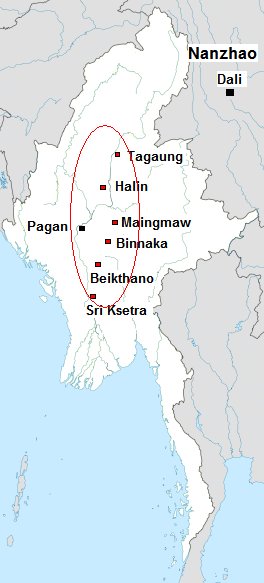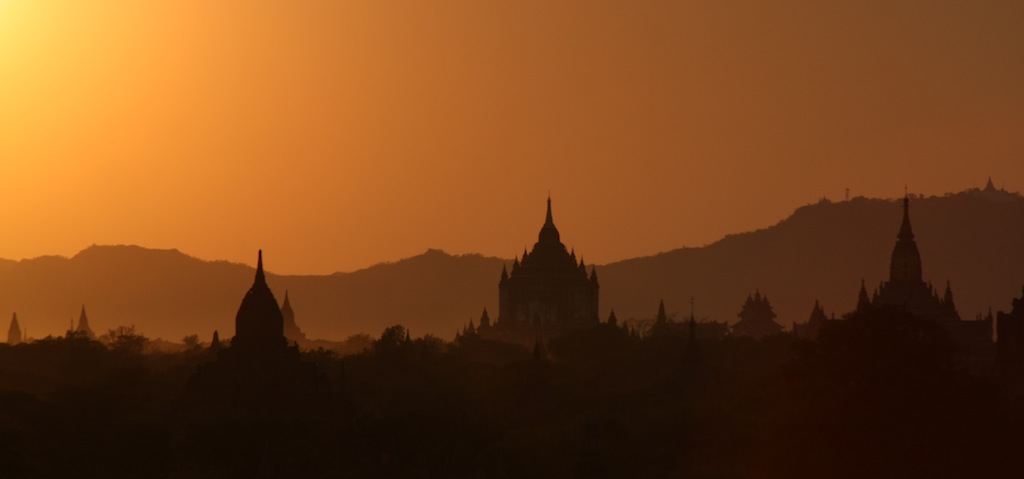|
Shwe Einthi
Shwe Einthi ( my, ရွှေအိမ်သည်, ; also Shwe Einsi, ) was a princess of Pagan Dynasty of Burma (Myanmar). She was the only daughter of King Kyansittha (r. 1084–1113), and the mother of King Alaungsithu.Harvey 1925: 39 The princess is best remembered in Burmese history The history of Myanmar (also known as Burma; my, မြန်မာ့သမိုင်း) covers the period from the time of first-known human settlements 13,000 years ago to the present day. The earliest inhabitants of recorded history wer ... for her failed love affair with the prince of Pateikkaya, a kingdom, believed to be in East Bengal or in eastern Chin Hills.Harvey 1925: 39, 329 Soon after her father became king in 1084, she fell in love the prince who was visiting Pagan. But her father forbade her to marry a foreigner, and instead married her off to Prince Saw Yun, the son of the late King Saw Lu. The primate of Pagan Shin Arahan broke the news to the prince, who subs ... [...More Info...] [...Related Items...] OR: [Wikipedia] [Google] [Baidu] |
Princess
Princess is a regal rank and the feminine equivalent of prince (from Latin ''princeps'', meaning principal citizen). Most often, the term has been used for the consort of a prince, or for the daughter of a king or prince. Princess as a substantive title Some princesses are reigning monarchs of principalities. There have been fewer instances of reigning princesses than reigning princes, as most principalities excluded women from inheriting the throne. Examples of princesses regnant have included Constance of Antioch, princess regnant of Antioch in the 12th century. Since the President of France, an office for which women are eligible, is ''ex-officio'' a Co-Prince of Andorra, then Andorra could theoretically be jointly ruled by a princess. Princess as a courtesy title Descendants of monarchs For many centuries, the title "princess" was not regularly used for a monarch's daughter, who, in English, might simply be called "Lady". Old English had no female equivalent of "prince ... [...More Info...] [...Related Items...] OR: [Wikipedia] [Google] [Baidu] |
Burmese History
The history of Myanmar (also known as Burma; my, မြန်မာ့သမိုင်း) covers the period from the time of first-known human settlements 13,000 years ago to the present day. The earliest inhabitants of recorded history were a Tibeto-Burman-speaking people who established the Pyu city-states ranged as far south as Pyay and adopted Theravada Buddhism. Another group, the Bamar people, entered the upper Irrawaddy valley in the early 9th century. They went on to establish the Pagan Kingdom (1044–1297), the first-ever unification of the Irrawaddy valley and its periphery. The Burmese language and Burma culture slowly came to replace Pyu norms during this period. After the First Mongol invasion of Burma in 1287, several small kingdoms, of which the Kingdom of Ava, the Hanthawaddy Kingdom, the Kingdom of Mrauk U and the Shan States were principal powers, came to dominate the landscape, replete with ever-shifting alliances and constant wars. In the second half ... [...More Info...] [...Related Items...] OR: [Wikipedia] [Google] [Baidu] |
Shin Arahan
, image =Shin Arahan.JPG , caption = Statute of Shin Arahan in Ananda Temple , birth name = , alias = , dharma_name = mnw, ဓမ္မဒဿဳ , birth_date = c. 1034 , birth_place = Thaton , death_date = 1115 (age 80) , death_place = Pagan , nationality = Burmese , religion = Buddhism , school = Theravada , lineage = Conjeveram-Thaton , title = Sayadaw , location = Pagan , education = , occupation = Buddhist monk , teacher = , predecessor = , successor = Shin Panthagu , students = Shin Panthagu , website = The Venerable Shin Arahan ( my, ရှင်အရဟံ ; formally, Dhammadassī Mahāthera, ; 1034 – 1115) was Thathanabaing of Burma of the Pagan Kingdom from 1056 to 1115. The monk, a native of Thaton Kingdom, was the religi ... [...More Info...] [...Related Items...] OR: [Wikipedia] [Google] [Baidu] |
Primate (bishop)
Primate () is a title or rank bestowed on some important archbishops in certain Christian churches. Depending on the particular tradition, it can denote either jurisdictional authority (title of authority) or (usually) ceremonial precedence (title of honour). Roman Catholic Church In the Western Church, a primate is an archbishop—or, rarely, a suffragan or exempt bishop—of a specific (mostly metropolitan) episcopal see (called a ''primatial see'') who has precedence over the bishoprics of one or more ecclesiastical provinces of a particular historical, political or cultural area. Historically, primates of particular sees were granted privileges including the authority to call and preside at national synods, jurisdiction to hear appeals from metropolitan tribunals, the right to crown the sovereign of the nation, and presiding at the investiture (installation) of archbishops in their sees. The office is generally found only in older Catholic countries, and is now ... [...More Info...] [...Related Items...] OR: [Wikipedia] [Google] [Baidu] |
Saw Lu
Saw Lu ( my, စောလူး ; also spelled Sawlu; also known as Min Lulin ( ), ; 19 April 1049 – 21 April 1084) was king of Pagan dynasty of Burma (Myanmar) from 1077 to 1084. He inherited from his father Anawrahta the Pagan Empire, the first ever unified kingdom of Burma (Myanmar) but proved an inexperienced ruler. In 1082, he faced a rebellion in Lower Burma, and was captured c. April 1083. He was later killed in captivity about a year later. Early life Saw Lu was born to King Anawrahta and Queen Agga Mahethi, Queen of the Southern Palace. The Burmese chronicles do not agree on the dates regarding his life and reign. The table below lists the dates given by the four main chronicles,Maha Yazawin Vol. 1 2006: 348 and scholarship. Moreover, the chronicles do not agree whether or not Saw Lu was older than Kyansittha, Anawrahta's other son. According to early chronicles, Kyansittha was older (20 years per ''Zata'') and (two years per ''Maha Yazawin''). However, later chro ... [...More Info...] [...Related Items...] OR: [Wikipedia] [Google] [Baidu] |
Chin Hills
The Chin Hills are a range of mountains in Chin State, northwestern Burma, Burma (Myanmar), that extends northward into India's Manipur state. Geography The highest peak in the Chin Hills is Khonu Msung, or Mount Victoria, in southern Chin State, which reaches . The Chin Hills–Arakan Yoma montane forests ecoregion has diverse forests with pine, Camellia sinensis, camellia and teak. Falam (town), Falam is the largest town in the Chin Hills, lying at their southern edge. The Chin Hills are the eastern part of the Patkai, Patkai Range, which includes the Lushai Hills and runs through Nagaland in India, as well as part of Burma. The Lushai Hills are frequently discussed with the Chin Hills as the topography, people's culture and history are similar. The southern prolongation of the Chin Hills is the Arakan Mountains, Arakan Range (Arakan Yoma), stretching as well from north to south. History Historically the area of the range has been populated by the Chin people who like their ne ... [...More Info...] [...Related Items...] OR: [Wikipedia] [Google] [Baidu] |
East Bengal
ur, , common_name = East Bengal , status = Province of the Dominion of Pakistan , p1 = Bengal Presidency , flag_p1 = Flag of British Bengal.svg , s1 = East Pakistan , flag_s1 = Flag of Pakistan.svg , national_anthem = , image_map = Bangladesh on the globe (Bangladesh centered).svg , image_flag = , flag_caption = , image_coat = , capital = Dacca (currently known as Dhaka) , common_languages = Bengali, Urdu and English , religion = , government_type = Parliamentary constitutional monarchy , legislature = Legislative Assembly , date_start = 14 August , year_start = 1947 , event_start = Partition of Bengal , date_end = 14 October , year_end = 19551970 – 1971 , event_end = One ... [...More Info...] [...Related Items...] OR: [Wikipedia] [Google] [Baidu] |
Burma
Myanmar, ; UK pronunciations: US pronunciations incl. . Note: Wikipedia's IPA conventions require indicating /r/ even in British English although only some British English speakers pronounce r at the end of syllables. As John Wells explains, the English spellings of both Myanmar and Burma assume a non-rhotic variety of English, in which the letter r before a consonant or finally serves merely to indicate a long vowel: �mjænmɑː, ˈbɜːmə So the pronunciation of the last syllable of Myanmar as ɑːror of Burma as ɜːrməby some speakers in the UK and most speakers in North America is in fact a spelling pronunciation based on a misunderstanding of non-rhotic spelling conventions. The final ''r'' in ''Myanmar'' was not intended for pronunciation and is there to ensure that the final a is pronounced with the broad ''ah'' () in "father". If the Burmese name my, မြန်မာ, label=none were spelled "Myanma" in English, this would be pronounced at the end by all ... [...More Info...] [...Related Items...] OR: [Wikipedia] [Google] [Baidu] |
Pagan Dynasty
The Kingdom of Pagan ( my, ပုဂံခေတ်, , ; also known as the Pagan Dynasty and the Pagan Empire; also the Bagan Dynasty or Bagan Empire) was the first Burmese kingdom to unify the regions that would later constitute modern-day Myanmar. Pagan's 250-year rule over the Irrawaddy valley and its periphery laid the foundation for the ascent of Burmese language and culture, the spread of Bamar ethnicity in Upper Myanmar, and the growth of Theravada Buddhism in Myanmar and in mainland Southeast Asia.Lieberman 2003: 88–123 The kingdom grew out of a small 9th-century settlement at Pagan (present-day Bagan) by the Mranma/Burmans, who had recently entered the Irrawaddy valley from the Kingdom of Nanzhao. Over the next two hundred years, the small principality gradually grew to absorb its surrounding regions until the 1050s and 1060s when King Anawrahta founded the Pagan Empire, for the first time unifying under one polity the Irrawaddy valley and its periphery. By t ... [...More Info...] [...Related Items...] OR: [Wikipedia] [Google] [Baidu] |
Theravada Buddhism
''Theravāda'' () ( si, ථේරවාදය, my, ထေရဝါဒ, th, เถรวาท, km, ថេរវាទ, lo, ເຖຣະວາດ, pi, , ) is the most commonly accepted name of Buddhism's oldest existing school. The school's adherents, termed Theravādins, have preserved their version of Gautama Buddha's teaching or ''Dharma (Buddhism), Buddha Dhamma'' in the Pāli Canon for over two millennia. The Pāli Canon is the most complete Buddhist canon surviving in a Indo-Aryan languages, classical Indian language, Pali, Pāli, which serves as the school's sacred language and ''lingua franca''.Crosby, Kate (2013), ''Theravada Buddhism: Continuity, Diversity, and Identity'', p. 2. In contrast to ''Mahāyāna'' and ''Vajrayāna'', Theravāda tends to be conservative in matters of doctrine (''pariyatti'') and monastic discipline (''vinaya''). One element of this conservatism is the fact that Theravāda rejects the authenticity of the Mahayana sutras (which appeared c. ... [...More Info...] [...Related Items...] OR: [Wikipedia] [Google] [Baidu] |
Bagan
Bagan (, ; formerly Pagan) is an ancient city and a UNESCO World Heritage Site in the Mandalay Region of Myanmar. From the 9th to 13th centuries, the city was the capital of the Bagan Kingdom, the first kingdom that unified the regions that would later constitute Myanmar. During the kingdom's height between the 11th and 13th centuries, more than 10,000 Buddhist temples, pagodas and monasteries were constructed in the Bagan plains alone, of which the remains of over 2200 temples and pagodas survive. The Bagan Archaeological Zone is a main attraction for the country's nascent tourism industry. Etymology Bagan is the present-day standard Burmese pronunciation of the Burmese word ''Pugan'' ( my-Mymr, ပုဂံ), derived from Old Burmese ''Pukam'' ( my-Mymr, ပုကမ်). Its classical Pali name is ''Arimaddanapura'' ( my-Mymr, အရိမဒ္ဒနာပူရ, lit. "the City that Tramples on Enemies"). Its other names in Pali are in reference to its extreme dry zone cl ... [...More Info...] [...Related Items...] OR: [Wikipedia] [Google] [Baidu] |




